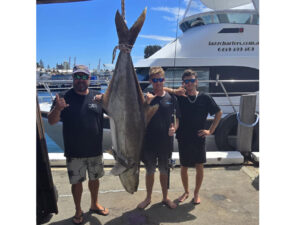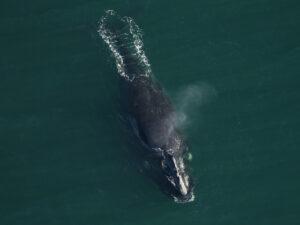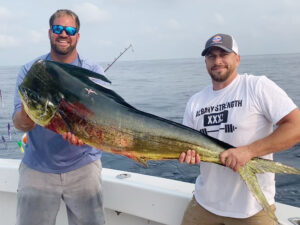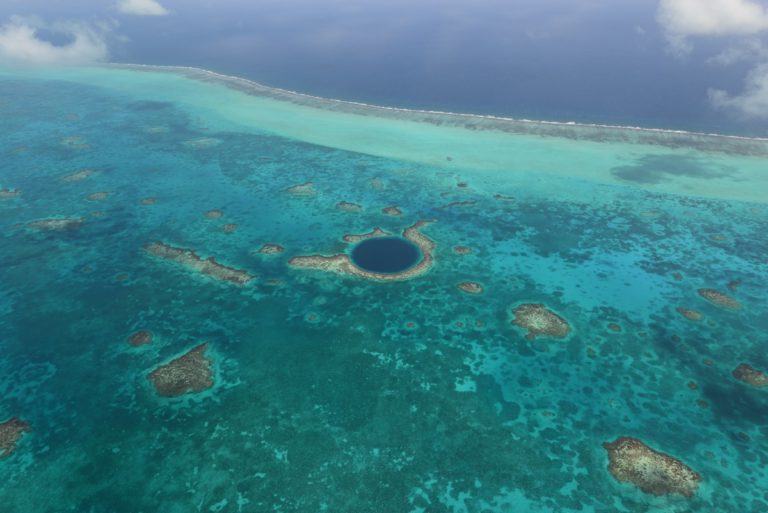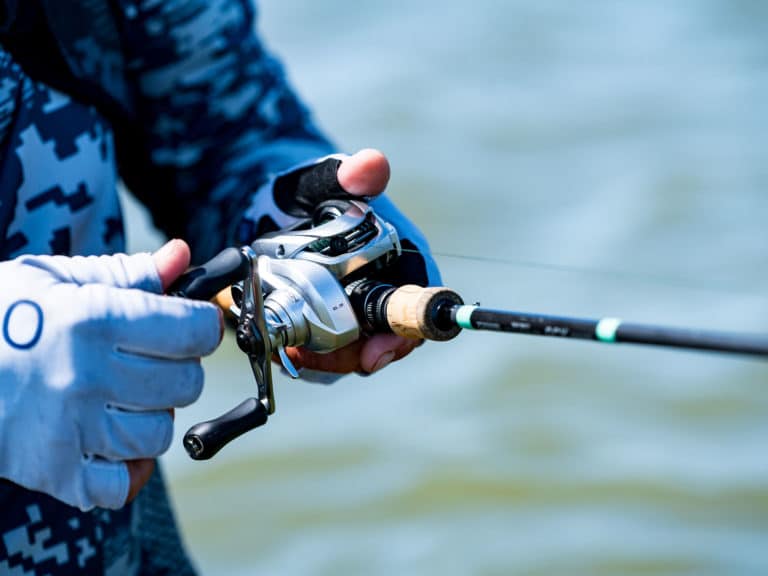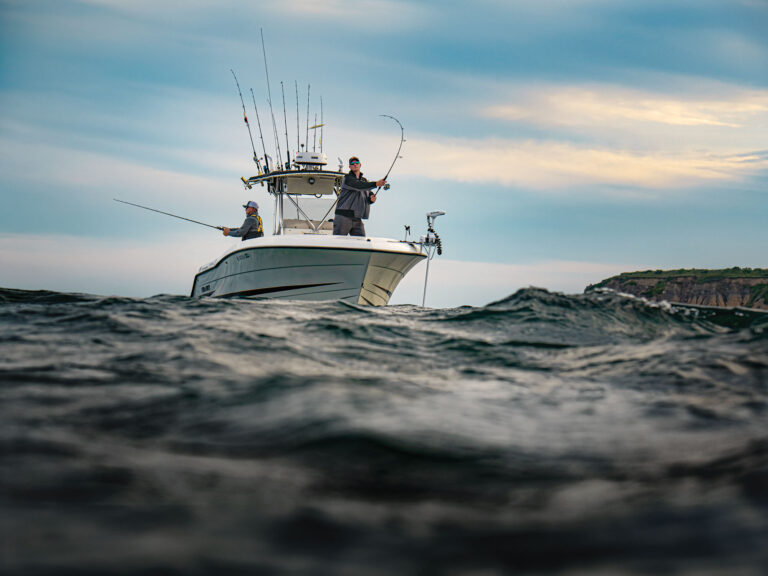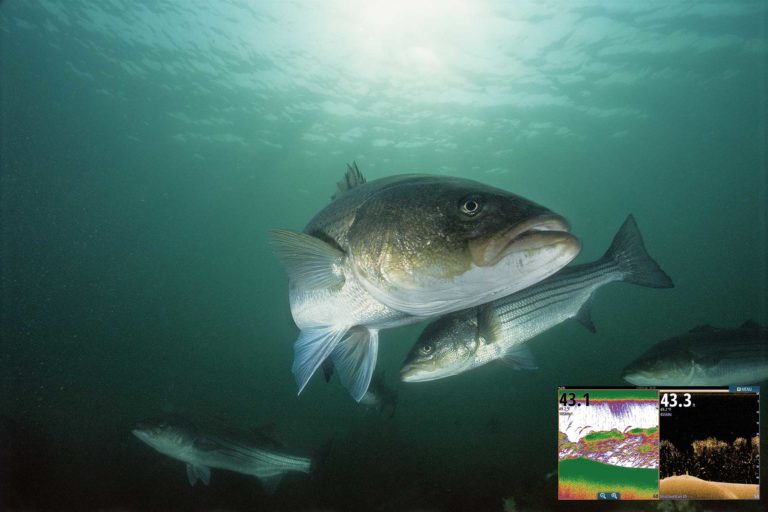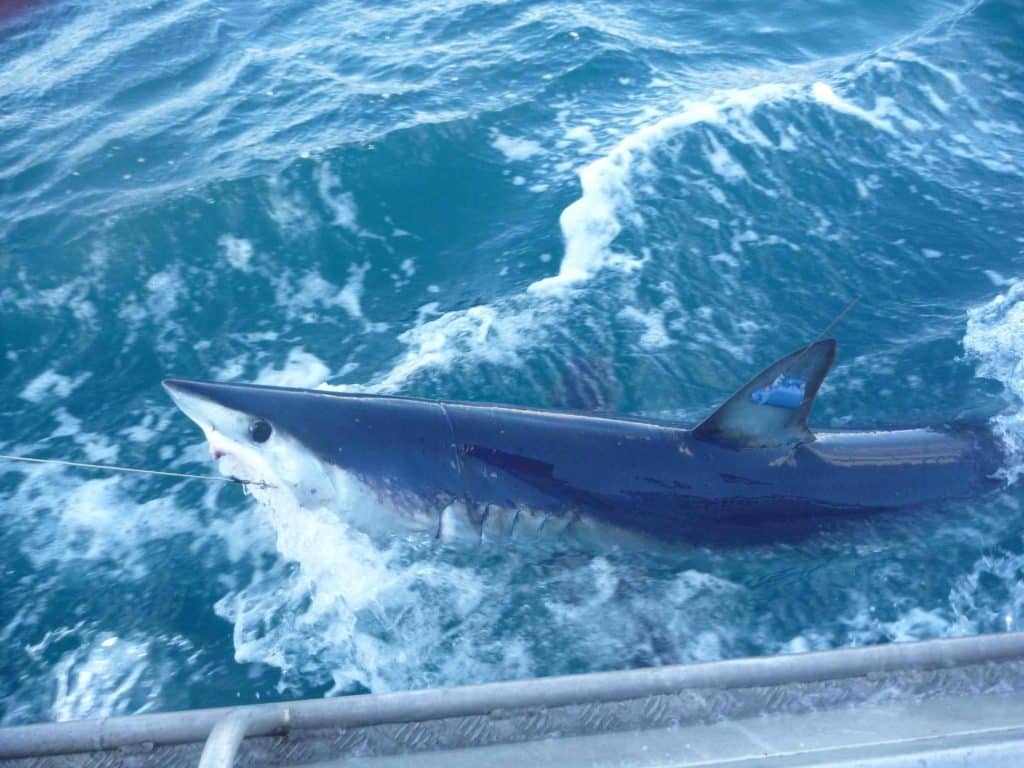
Mako Tagging
DAVIE, FL— OCTOBER 29, 2012— A satellite reporting tagging device know as a SPOT tag, attached to a shortfin mako shark dubbed “Carol” in New Zealand five months ago, is providing scientists with remarkable and previously unknown details of the timing and long-distance migratory movements of this species.
The Guy Harvey Research Institute (GHRI) at Nova Southeastern University is collaborating with the New Zealand National Institute of Water and Atmospheric Research (NIWA) on the tagging experiment with Carol the shortfin mako shark.
The SPOT tag is revealing that Carol is spending a lot of time at the ocean’s surface, reporting her location to the satellite several times daily.
“The unexpectedly frequent daily detections are providing us with a really high resolution view of the migration of this animal,” said GHRI Director Dr. Mahmood Shivji. “We’ve found that Carol has traveled over 5,700 miles in five months, averaging 60 miles per day during some parts of her migration—and this is just a juvenile shark!”
To follow Carol’s travels on a GHRI interactive website go to:
http://www.nova.edu/johnmatt/makosharks.htm
“Conventional identification tags tell us little about the timing of mako shark movements, the route that they take or distance traveled,” said Dr. Malcolm Francis, who is leading the NIWA effort on this study. “The SPOT tag, revealing Carol’s detailed travels from New Zealand to Fiji and back, shows theses sharks have an amazing internal navigation system that keeps them on course over long journeys.”
Given the high fishing pressure on makos for their fins and meat, this species is showing declining population trends in parts of its range, which has resulted in the species being listed as “Vulnerable” on the IUCN Red List of threatened species.
Based on the amazing results from this initial trial, the GHRI and NIWA are expanding their mako migration study off New Zealand starting in January 2013, according to Dr. Shivji. The GHRI and Dr. Guy Harvey are also working with Captain Anthony Mendillo of Keen M International to compare the migratory patterns of mako sharks in the Atlantic by tagging them off the coast of Isla Mujeres, Mexico.
–– Source: John Bell

